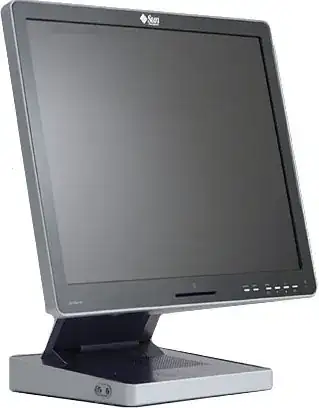Good luck with your NetVista adventure. Here's a page that might provide some additional detail for you.
There are several devices out there that support XDMCP. If you like, you can even have hardware-based 3D acceleration in some of them using PCI expansion slots, which means if you can get a card in PCI form-factor, you can most likely pick up a cheap older gaming card that would give you a nice resolution and excellent acceleration. The model mentioned is an HP 5275 (discontinued), which HP has spent some time in getting graphics acceleration working nicely. While the NVidia FX 5200 was a dog for Windows when it came out, it has very reasonable 2D and 3D acceleration when using proprietary drivers under Ubuntu (I'm using it right now), and the Nouveau driver is coming along nicely, with good 2D and so-so 3D support (I'm using the driver in a PowerMac G5 running Ubuntu 9.04 and a FX 5200 AGP). Last I visited the local Fry's (an electronics retailer in the 'States, I don't know if they have outlets in Perth) they had stacks of FX 5200 PCI cards for cheep cheep cheep.
That being said, if you get an older ATI card, the acceleration tends to be supported better in the Xorg drivers. Keep that in mind.
HP's Thin Clients have units that come with Debian installs on them. I personally own a little HP T5125, not exactly a great device but it gets the job done. They can be found for cheap if you look around, although it sounds like you want something with a little more power under the hood.
Wyse makes a handful of terminals that also perform this function, although you'll want to be careful about which ones you pick, as they tend to use Windows XPe in most of their devices.
A recent introduction is IGEL, which supports thin clients in a Linux setting. I have not had the pleasure of trying out any of their products.
If you're just looking for personal use, or something a little more "disposable", you can often snag thin clients off of eBay that have XDMCP support for reasonable prices, provided you check the listing to see if the protocol support is there. I don't recommend this route unless you're planning to use it for personal use, most of the units you'll get will not be under warranty. However, discounted hardware is an attractive option, and newer thin clients tend to run a few hundred dollars, vs. $50 for a used one that happens to be a discontinued model that's used or unwanted.
If you are truly adventuresome, and want to live "on the bleeding edge", you can always pick up the clean-room reverse engineering that's been done on the Sun Ray protocol and see if you can figure out the remaining bits and pieces. If the protocol was fully documented, then an xorg modular server could be developed that would allow for people to directly drive the devices without the need for Sun's software to be installed, or even a heavily-hacked VNC service that could shunt Sun Ray graphics primitives. There are lots and lots of Sun Rays on eBay currently, covering many different models.

(source: linuxdevices.com)
As I understand it, there's even a Sun Ray client in a laptop form factor.

Reverse-engineering a Sun product to turn it into a thin client is not a new proposition, in fact, it was done with Sun JavaStation models for awhile, especially the nice-looking "Krups" model.

If you can still find one of these then it might be a (slightly easier) adventure to get a NetBSD or Linux kernel loaded via network boot and use it as a thin client.


